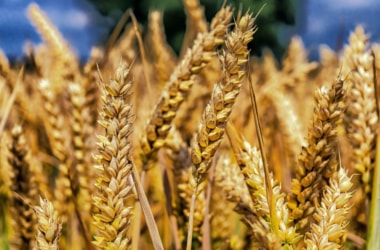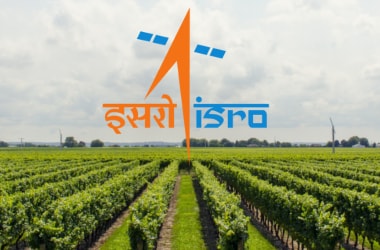Agriculture - Current Affairs for April, 2017
Agriculture Current Affairs for April, 2017
Month wise coverage of Agriculture Current Affairs helps you improve your general knowledge and prepare for all competitive exams like IBPS, Bank PO, SBI PO, RRB, RBI, LIC, Specialist Officer, Clerk, SSC, UPSC, Railway etc. This section is updated daily with the most important events.Preparing Agriculture Current Affairs April, 2017
1. Read the most important Agriculture Current affairs and facts here. 2. Take practice test of our Agriculture MCQ and Objective type questions. 3. Clear any quiz, GK, job interview or competitive exam on current affairs.
- Month & Year
▼ India aims for record high food grain production [04-26-17]
 The country aims to produce 273 MT of foodgrains in the crop year 2017-2018 commencing July and maintaining 4 percent farm growth in anticipation of a good monsoon. The country aims to produce 273 MT of foodgrains in the crop year 2017-2018 commencing July and maintaining 4 percent farm growth in anticipation of a good monsoon.
Food grain production is estimated to touch a record 271.98 MT in the current year (July-June) on the back of good rains after two years of drought, according to the second estimate of the agriculture ministry.
Foodgrain production target for next year is set at record 273 million tonnes, the ministry announced at a two-day national conference that is discussing sowing strategy for the coming kharif season.
Southwest monsoon is forecast to be normal which will help achieve the desired target.
It may be noted that 50 percent of the foodgrain output comes from both kharif (summer) and rabi (winter) seasons.
Kharif crops are normally sown in around 72 million hectares. Rice, pulses (tur, urad and moong), oilseeds (groundnut and soybean), cotton and sugarcane are main crops grown in this season.
The country expects another year of good monsoon. A 4 percent agri-growth rate will be maintained in 2017-18.
Since kharif crops are heavily dependent on the performance of the southwest monsoon, the states should plan for all possible scenarios like delayed onset of rains, prolonged dry spells and less/excess rains.
States have been asked to help farmers to buy the crop insurance policy Pradhan Mantri Fasal Bima Yojana and aim to insure 40 percent of the sown area (194 million hectares) in 2017-18 crop year.
Another area of focus is the supply of quality seeds and achieve the target of 23 million tonnes in 2017-18.
Stress is on diversification, market reforms and setting up of state and district committees for monitoring of agri-schemes.
According to the agriculture ministry, there is sufficient supply of seeds for the forthcoming kharif season.
For instance, about 83.46 lakh quintals of paddy seeds and 3.75 lakh quintals of tur dal seeds are available.
Fertiliser requirement is estimated to be 28.99 million tonnes for the season.
The two-day national conference is deliberating on how to increase food grain production in the next year and implement technology and new innovations in the farm sector.
|
▼ ISRO to geo tag agricultural assets [04-10-17]
 Union Agricultural Ministry has partnered the National Remote Sensing Centre, ISRO for geotagging agricultural assets. Union Agricultural Ministry has partnered the National Remote Sensing Centre, ISRO for geotagging agricultural assets.
Agriculture Ministry under the Rashtriya Krishi Vikas Yojana and NRSC/ISRO have signed an MoU to this effect.
It will improve governance due to real-time monitoring and effective utilisation of agricultural assets such as ponds, crop area, warehouses and laboratories etc.
Currently, officials provide information on the assets manually, so there is no transparency.
Geo-tag will provide realistic status of assets.
It will not only help in monitoring and utilising assets but will be useful in formulating schemes for development in the agricultural sector.
It will also help in avoiding duplication of data.
Utilisation of space technology will help farmers to further get access to pesticide testing labs, storage infrastructure, and market-related information.
What is RKVY?
- RKVY is a special Additional Central Assistance Scheme.
- It was launched in August 2007 as a part of the 11th Five Year Plan.
- It was aimed to orient agricultural development strategies, to reaffirm its commitment to achieve 4% annual growth in the agricultural sector during the 11th plan (2007–11).
- It was also launched to incentivise the States to provide additional resources in their State Plans over and above their baseline expenditure to bridge critical gaps.
Geotagging- It is the process of adding geographical identification like latitude and longitude to various media such as a photo or video.
- It helps user to find a wide variety of location-specific information from a device.
- It provides users the pinpoint location of the content of a given picture.
- Geomapping is a visual representation of the geographical location of geotagged assets layered on top of map or satellite imagery.
|
▼ One of a kind ICFMD in India! [04-3-17]
Union minister for agriculture and farmers’ welfare Radha Mohan Singh on April 1, 2017 inaugurated International Centre for Foot and Mouth Disease (ICFMD).
It is built at a cost of INR 200 crore at Arugul on the outskirts of Bhubaneswar.
The one-of-its-kind research centre in South Asia, will help analyse exotic virus strains in order to develop diagnostics and vaccines to prevent their incursion.
Development and upliftment of farmers, who are backbone of the country, is the first priority of the government and the aim is to double the income of farmers by 2022.
As foot and mouth diseases an infectious and sometimes fatal viral disease that affects cloven-hoofed animals, including domestic and wild bovids, such a research centre will be beneficial to find out the remedies for the disease.
This is 10th in the world and it is dedicated to the nation on the occasion of Utkal Divas, the formation day of Odisha.
Established by Indian Council of Agricultural Research, the state-of-the-art research centre with high containment laboratory facility will cater to the need of researchers and scientists for safe handling of FMD virus as per international norms.
Though 70 countries have eradicated the disease successfully, it is still endemic in India and has a direct bearing on the rural economy and farmers who depend on the cattle for eke out their living.
Stating that India is number one in milk production in the world, production will increase further and the loss of nearly INR 23,000 crore per annum will be prevented if the disease is controlled and eliminated.
The government will provide Rs 600 crore more to the centre for equipment and research.
The economic losses caused by the disease are mainly due to the loss in milk production and reduction in the working ability of the animals.
Export is hampered because countries free from the disease refuse to accept milk and its products, meat and hide from the country.
|